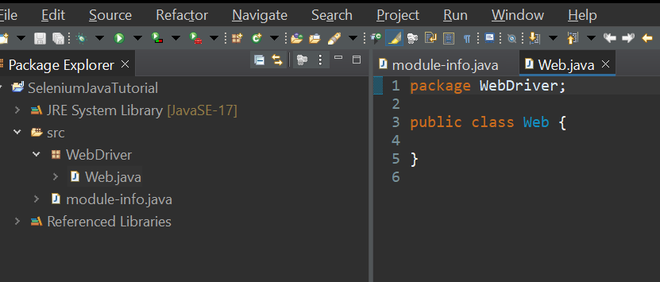Introduction
In the ever-evolving world of software development, the need for effective and efficient testing methods has never been higher. Among the tools and frameworks used for automating tests, Selenium stands out as one of the most popular choices. Coupled with Java, it provides a robust and versatile platform for performing automated tests across various web applications.
For those just starting out in the field of automation testing, learning Selenium-Java projects offers an excellent entry point. By gaining hands-on experience with real-world projects, beginners can quickly build foundational skills that are not only useful but highly demanded in the tech industry.
In this blog post, we will delve into why Selenium automation testing is so crucial, what makes Java an excellent programming language to use with Selenium, and how beginners can approach building Selenium-Java projects from the ground up. Whether you’re considering a Selenium course or aiming for Selenium certification, this guide will give you the knowledge and tools needed to succeed.
Why Selenium with Java?
Before diving into project ideas, let’s first understand why combining Selenium and Java is so effective for automation testing.
What is Selenium?
Selenium is an open-source framework used for automating the testing of web applications. It allows testers to simulate user interactions with a web browser, such as clicking buttons, filling forms, and verifying content, ensuring that web applications work as intended. Selenium supports multiple browsers like Google Chrome, Firefox, and Internet Explorer, making it a versatile solution for cross-browser testing.
Why Java?
Java, as a programming language, brings several advantages to the table when used with Selenium:
- Object-Oriented Language: Java’s object-oriented nature helps organize test scripts, making them more maintainable and reusable.
- Platform Independence: Since Java is platform-independent, test scripts written in Java can run on any system that supports Java, ensuring flexibility.
- Strong Ecosystem: Java has a large number of libraries and frameworks that complement Selenium, such as JUnit, TestNG, and Apache POI for reporting.
The combination of Selenium and Java allows testers to write clear, scalable, and maintainable test scripts that can handle complex testing scenarios with ease.
Understanding Selenium Automation Testing
Automation testing has become an integral part of software development due to its efficiency in ensuring high-quality releases. By automating repetitive testing tasks, developers and testers can save time and reduce the risk of human error.
Selenium automation testing works by controlling a web browser from a programmatic interface. Using Selenium WebDriver (the most widely used Selenium component), testers can automate browsing actions, input data into forms, click buttons, verify text, and more.
Here’s a high-level breakdown of how Selenium works:
- Test Creation: Write test scripts in a programming language such as Java.
- Test Execution: Run these scripts in a web browser, simulating user interactions.
- Test Results: Collect results to identify bugs, inconsistencies, or performance issues.
Key Benefits of Selenium-Java Projects for Beginners
For those starting with Selenium-Java projects, there are several key benefits:
- Hands-On Experience: By working on Selenium-Java projects, beginners can bridge the gap between theory and practice, giving them real-world skills that can be directly applied in the workplace.
- Enhanced Learning: Beginners gain a deeper understanding of Selenium-Java projects concepts like Selenium WebDriver, page object models, and test frameworks when they apply them in projects.
- Portfolio Building: Having a set of working Selenium-Java projects under your belt makes you stand out when applying for jobs or certifications.
Step-by-Step Guide to Building Selenium-Java Projects for Beginners
If you’re ready to get started with Selenium-Java projects, here is a step-by-step guide to help you through the process. We’ll begin with basic projects and move to more advanced concepts as you progress.

Set Up Your Environment
Before you begin writing Selenium test scripts, you need to set up your development environment. Here’s how:
- Install Java: Download and install the Java Development Kit (JDK) from the official Oracle website.
- Set Up Eclipse/IntelliJ: Install an IDE like Eclipse or IntelliJ IDEA, which provides a convenient environment for coding in Java.
- Install Selenium: Download the Selenium WebDriver jar files from the official Selenium website.
- Configure Dependencies: If you’re using Maven or Gradle, you can add the Selenium WebDriver dependency to your project configuration file.
Start with a Simple Selenium-Java Project
The best way to learn is by doing. Start by building a simple Selenium-Java project to automate a basic task, like testing Google search functionality.
Example: Automating Google Search with Selenium
Here’s a simple Java code snippet using Selenium to automate a Google search:
javaimport org.openqa.selenium.WebDriver;
import org.openqa.selenium.chrome.ChromeDriver;
import org.openqa.selenium.By;
import org.openqa.selenium.WebElement;
public class GoogleSearchAutomation {
public static void main(String[] args) {
// Set the path to your chromedriver
System.setProperty("webdriver.chrome.driver", "path/to/chromedriver");
// Initialize the WebDriver
WebDriver driver = new ChromeDriver();
// Open Google
driver.get("https://www.google.com");
// Locate the search box and type a query
WebElement searchBox = driver.findElement(By.name("q"));
searchBox.sendKeys("Selenium-Java projects for beginners");
// Submit the search
searchBox.submit();
// Wait for results to load
driver.quit();
}
}This is a basic test case where we open the Google homepage, search for a query, and then quit the browser. Even with such a simple example, you are learning how to:
- Launch a browser
- Interact with elements (like the search box)
- Handle browser lifecycle events
Explore More Complex Test Scenarios
Once you are comfortable with basic Selenium operations, try working on more complex scenarios such as:
- Form Submission: Automate the testing of form submissions on a website, verifying whether the form is properly submitted and data is stored correctly.
- Authentication Testing: Write test scripts for login and logout functionality, ensuring secure user access.
- Cross-Browser Testing: Use Selenium Grid or Docker to run tests across multiple browsers and operating systems to ensure compatibility.
Implement Test Frameworks (JUnit or TestNG)
For better organization and maintainability, integrate a testing framework like JUnit or TestNG into your projects. These frameworks help in:
- Test Case Management: Organizing tests into suites, running tests in parallel, and reporting results.
- Assertions: Easily checking the correctness of test results by asserting that expected values match actual values.
- Test Annotations: Using annotations such as
@Test,@Before,@Afterto control test execution.
Learn Page Object Model (POM)
The Page Object Model (POM) is a design pattern that helps organize Selenium test code, making it more maintainable and reusable. In this pattern, each web page is represented by a class that encapsulates the page’s elements and actions.
By implementing POM, you can avoid code duplication and make your tests easier to understand and maintain.
Beginner-Friendly Selenium-Java Projects

Automating a Login Page
Objective: Validate login functionality by automating a test script for a web application.
Tools Required: Selenium WebDriver, Java, TestNG/JUnit
Steps:
- Set up Selenium WebDriver and configure Java.
- Identify web elements (username, password, login button) using locators like ID, name, and XPath.
- Write a Java program to:
- Open a browser
- Navigate to the login page
- Enter credentials
- Click on the login button
- Verify successful login
- Implement assertions using TestNG to validate test results.
Example Code:
WebDriver driver = new ChromeDriver();
driver.get("https://example.com/login");
driver.findElement(By.id("username")).sendKeys("testuser");
driver.findElement(By.id("password")).sendKeys("password123");
driver.findElement(By.id("loginBtn")).click();
Assert.assertTrue(driver.getCurrentUrl().contains("dashboard"));
driver.quit();Automating Form Submission
Objective: Automate form filling and submission for an online application.
Steps:
- Locate all input fields using different Selenium locators.
- Automate text entry, dropdown selection, radio buttons, and checkboxes.
- Capture screenshots after form submission.
- Validate success messages using assertions.
Web Table Data Extraction
Objective: Extract and validate data from a web table using Selenium.
Steps:
- Identify the web table using XPath or CSS selectors.
- Use findElements to iterate through rows and columns.
- Extract text and validate specific cell values.
- Implement dynamic data handling.
Example Code:
List<WebElement> rows = driver.findElements(By.xpath("//table[@id='dataTable']/tbody/tr"));
for(WebElement row : rows) {
List<WebElement> cells = row.findElements(By.tagName("td"));
for(WebElement cell : cells) {
System.out.println(cell.getText());
}
}Handling Alerts and Pop-ups
Objective: Automate interactions with JavaScript alerts, confirmation boxes, and pop-ups.
Steps:
- Trigger an alert and switch to the alert window.
- Accept or dismiss alerts.
- Extract and validate alert text.
Example Code:
Alert alert = driver.switchTo().alert();
System.out.println(alert.getText());
alert.accept();Automating E-Commerce Website Testing
Objective: Automate product search, cart management, and checkout process.
Steps:
- Automate product search using the search bar.
- Add items to the cart and validate cart total.
- Proceed to checkout and validate order placement.
Further Learning: Selenium Course Online and Certification
If you’re serious about enhancing your automation testing skills, consider enrolling in a Selenium course online. A structured course will guide you step-by-step through advanced concepts like:
- Handling dynamic web elements
- Using advanced locator strategies
- Performing data-driven testing with Excel and databases
- Integrating Selenium with tools like Jenkins for Continuous Integration (CI)
Upon completion of a course, you may also consider pursuing a Selenium certification. A certification validates your skills, making you more competitive in the job market and demonstrating your proficiency in automation testing.
Conclusion
Selenium automation testing, especially when paired with Java, provides an incredibly powerful toolset for testers to automate web application testing efficiently and effectively. By starting with small Selenium-Java projects and progressing to more complex scenarios, beginners can quickly gain the skills needed to thrive in the world of software testing.
If you’re serious about learning and mastering Selenium, take the first step today. Enroll in a Selenium course online, get hands-on experience with Selenium-Java projects, and work your way towards becoming a certified Selenium expert. Your future in automation testing awaits!
Key Takeaways
Enroll in a Selenium course online to enhance your skills and pursue Selenium certification for career advancement.































One Response